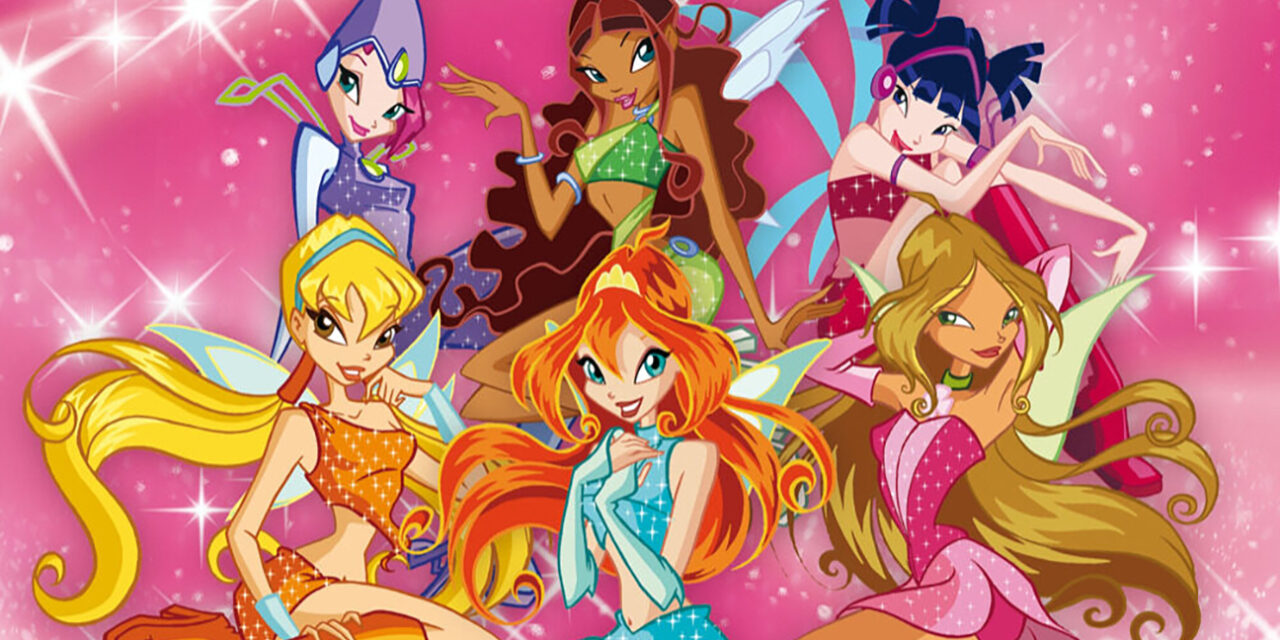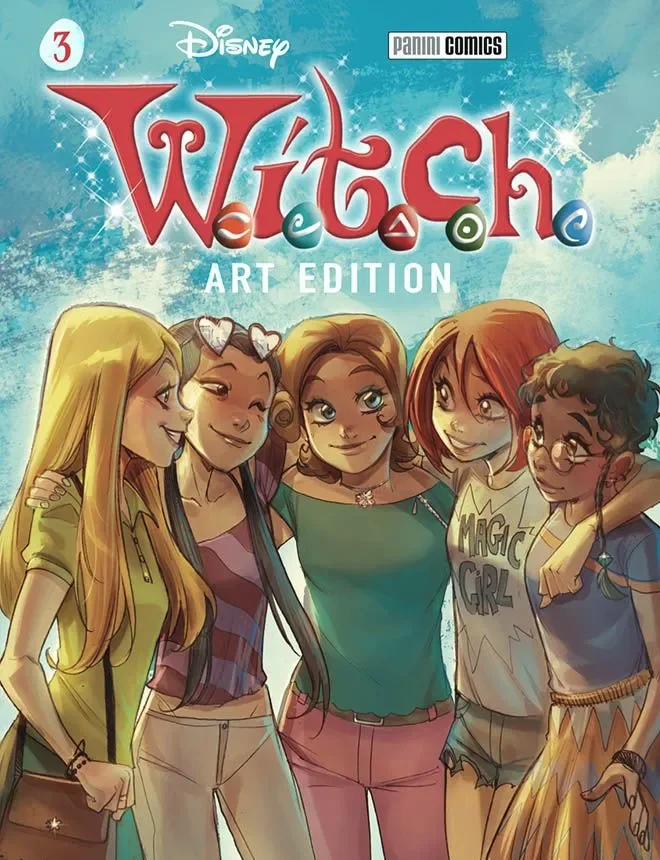
Winx Club | The fairies who have revolutionized female friendship
Creator
Director
Year
Twenty years ago, Winx Club was a must in many Italian households. At that time, most of the shows featured male heroes as the main characters, which made it challenging for girls to identify with them. Girls had a more limited selection, including options such as W.I.T.C.H., Sailor Moon, Angels Friends, or Bratz.
Then along came Winx Club, revolutionizing a genre in its early days by featuring female characters who were strong and in control and assertive, not the passive protagonists that were so often the stereotype of children’s entertainment. It features some strong life-lessons and positive stories.
Winx Club is an Italian animated series produced by Rainbow S.p.A and created by Iginio Straffi, which gained significant popularity upon its initial release. It stands as an authentic Italian product that left a lasting impact on the international market.
To this day, it boasts three movies, two spin-offs, a Netflix show, a reboot in development, three live events, numerous tours, an extensive merchandise line and three million video game players. It has been distributed in 140 countries and translated into 40 languages.
The series narrates the tale of five, later six, fairies who enroll at Alfea, a magical school for fairies. It is situated in the Magic Dimension, specifically in the suburbs of the capital city, Magix.
The main character is Bloom, the fairy of the Dragon Flame. She reaches Alfea thanks to Stella, the fairy of the Shining Sun. On the first day of school, they meet their flatmates: Flora, the fairy of Nature; Tecna, the fairy of Technology; and Musa, the fairy of Music. Later, a new member joins the group: Layla, the fairy of Waves. The Winx’s initial adversaries are the Trix, three witches, and former students of Cloud Tower School.
Magic Bloom
The idea for Bloom’s character originated when Iginio Straffi encountered a girl at university who was raised by adoptive parents. In 1999, he began crafting a prototype called Magic Bloom, although it never aired. The animation style is clearly influenced by Sailor Moon and Japanese anime. The title Winx derives from the word ‘wings’, with the last two letters replaced by ‘X,’ symbolizing the fairies’ actual wings.
Iginio Straffi in an interview for Rai1
The depth beneath the sparkle
The six fairies not only join forces to overcome enemies and safeguard the Magical Dimension, but they also stand united in facing typical teenage challenges.
The series explores the emotional and psychological dimensions of its characters. Some narratives are identity, belonging, family secrets, divorce, social expectations, strict parents, grief, and financial issues.
These profound themes are portrayed against a colorful backdrop of the characters’ outfits. The six fairies wear high heels, knee boots, shiny miniskirts, and crop tops, showcasing the unmistakable fashion of the 2000s.
The Winx fairies challenge stereotypes and perceptions of femininity. Despite initial portrayals as shallow figures, they demonstrate courage and emotional intelligence. Princess Stella of Solaria defies the stupid blonde stereotype with her cleverness and depth, inspiring others to look beyond appearances and social status.
The central theme in Winx Club revolves around female friendship.
Some of the girls’ conversations can be easily linked to scenes from Sex and the City. The dynamics are similar: a group of female friends having lunch together, whether it’s at the Ritz in New York or in the school canteen, talking about the things that interest them on a daily basis.
These dynamics mirror those found in the Australian TV series H2O: Just Add Water. The show follows three mermaids living in an ordinary world while all the while keeping their identities a secret. Their strong friendship helps them to overcome magical challenges. Numerous scenes unfold in a seaside bar where the three girls meet.
Mastering the art of strategic villainy
Each character in Winx Club is complex and has an intricate backstory. This is also true of Valtor, a powerful sorcerer and villain of the story.
Valtor displays a high level of intelligence and expertise throughout the series. His actions are planned to accomplish his plan of revenge. Valtor spots the weaknesses of his rivals and exploits them to get stronger. This could imply exploiting insecurities and emotional vulnerabilities.
Valtor represents toxic masculinity with his emotional suppression and reliance on aggression. His behavior maintains isolation and hostility, holding back genuine connections. His is an example of conforming to predictable behaviour expected of boys and girls, men and women, and suppressing emotional vulnerability.
His strategic thinking sets him apart from more impulsive or short-sighted villains, making him a challenging adversary for the Winx Club.
Magic echoes
Numerous parallels with the Harry Potter series can be identified in Winx Club. Firstly, both main characters are orphans. Much like Harry, Bloom’s parents perished when she was a child. This storyline is told in the movie Winx Club: The Secret of The Lost Kingdom (2007). Animated by Rainbow S.p.A, it serves as the concluding chapter that ties up the narrative arc of the first three seasons and is not only the first computer-animated Winx Club product but also a resounding success. Later on, the introduction of the water stars is noteworthy. Each fairy must give up on a significant aspect of her life to obtain a water star, in order to defeat Valtor.
“Mom, what I desire most in the world is to hold you again, I want to hug you, I want to talk to you, I want to hear you sing. But my friends and the rest of the world will be in trouble if I decide to come with you. Goodbye, mom.”
Musa
These magical artifacts echo the seven Horcruxes Harry, Ron, and Hermione had to find to defeat Voldemort.
Lastly, both series unfold in a boarding school setting. Students not only attend classes and live together but also grow up together and enhance their magical powers. Professors from both Alfea and Hogwarts protected their castles with spells. Both castles are situated in the outdoors and near a lake.
In both stories, mentor figures can be found. Dumbledore and Faragonda, the headmister and the headmistress of respective magical schools both operate as mentors to the young characters, guiding them in their challenges and education.
The show must go on
In January 2021 Netflix released Fate: the Winx Saga and more than 50 million people around the world watched it only in the first month of its release. In September 2022, Netflix released the second season, and soon after, they cancelled the show.
It is a TV show based on the Winx Club cartoon. The title is a pun: in Italian Fate means fairies. The story is set in a boarding school in the Otherworld where Bloom (Abigail Cowen), Stella (Hannah van der Westhuysen), Aisha/Layla (Precious Mustapha), Terra (Eliot Salt) and Musa (Elisha Applebaum) enroll in order to study Magic. All of them share an apartment inside the castle, and their communal room is called Winx.
It is not a live-action, as there are many differences compared to the original story: Flora is missing in the first season and there is no mention of Tecna. The story is darker, many adult elements are presented, such as weed, making out and sex.
It is a TV show for the children who loved the cartoon when they were younger and now they prefer to see a more realistic and teenager version of it.
Tag
Buy a ☕ for Hypercritic









